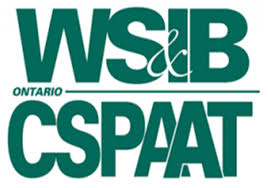By Robert C. Cronish
Special to Ontario Construction Report
The Workplace Safety Insurance Board (WSIB) has been holding public meetings to outline the new Rate Framework Reform Proposal prepared by Douglas Stanley.
WSIB chair Elizabeth Wittmer and president David Marshall suggest that Stanley has proposed a plausible working model so the WSIB could distribute wage assessment costs in a fair and transparent system. Its position is that Mr. Stanley’s work has resulted in a simple and transparent modernized classification system aligned to the North American Industry Classification System (NAICS).
Secondly, the WSIB says it will introduce a fair process which will prospectively set premium rates, fairly representing individual employers’ claim experience relative to their industry. Furthermore, the WSIB leaders assert Stanley’s report slates a reasonable transition path to assure employers that they can gradually adopt the new premium rate setting process.
In my opinion, as a specialist in workplace safety and insurance law as certified by the Law Society, the WSIB’s proposals are false and misleading.
NAICS sector codes are said to be aggregate on the basis that NICS sector for the purpose of rate-setting is based on the collective claim experience for each sectoral group, which will then be determined.
To do so, the WSIB proposes that risk bands will be a hierarchal series of divisions of employers and the foundational NAICS sector, varying from low to the very highest risk levels. The board then states that the number of risk bands will depend on the scope of risk within the sector, and the broader the scope, the more bands you can create. Individual employers will fall into one of the sector risk bands, depending on the calculation of their risk profile.
Stanley then proposes creating risk profiles, which will introduce individual employers’ experiences. Each employer will then have a risk profile calculated and this profile will then determine which “band” the employer will fall into, and consequently what premium to pay. The WSIB asserts that an employer whose risk bank improves or deteriorates over time will move down or up in the band hierarchy in accordance with clearly defined rules that ensure the “risk performance” is real and statically reliable, and that rate stability is not being sacrificed
All the forgoing represent false propositions, in my opinion.
This is because Mr. Stanley recommends the elimination of Second Injury Fund Relief (SIFR) and the experience rating structure now in place.
What the WSIB fails to do is to address the responsibility of both employer and workers to effect early and safe return to work as set forth in Operational Policy Documents (OPD) 19-02-02 and 1902-03. OPD 19-02-02 sets forth worker obligations, and OPD 19-02-03 sets forth employer obligations.
Where the worker has a pre-existing condition contributing to the workers’ disablement as described in the WSAIT decision number 239/09 pages 15 to 18, the obligations are well-defined about who is responsible in a joint effort for early and safe return to modified duties.
The employer, by having an immediate understanding of the worker’s functional abilities, an usually fulfill the worker’s need for modified duties until the worker is capable to return to regular duties. Where a worker wants to refuse modified duties, the existing policy will shut down payment of benefits at the Workplace Safety Insurance Appeal Branch level. As well, the employer has the opportunity to effect early mediation, now 10 business days, wherein the employer and worker can determine what sustainable and suitable modified duties are available for the worker at full pay, and if the worker refuses, it is the duty of the return-to-work mediator to request termination of the employee’s loss-of-earning benefits.
These existing policies serve to allow the injured workers to return to the employer of record, which the WSIB has stated numerous times to be the most positive solution.
As well, in page 41 of his report, Stanley states the WSIB goals and objectives and rate setting are to raise money it needs in accordance with the funding policy, and to fairly assess employers for these costs. This raises a question about prevention. Although it is outside the scope of his report, it clearly is an issue that must be addressed given WSIB’s funding of existing prevention programs. Professor Paul Weiler in his book relating to workplace structuring says at page 90 that the accident itself can cause certain costs to the employer. By eliminating experience rating programs, the incentive to allow for early and safe return to work by the insured worker is removed.
On the other hand, if private insurance could provide coverage, the insurance user will provide insurance ratings. The WSIB would not need to concern itself whether employers are paying their fair share of workplace coverage as Stanley claims is necessary, as all claims will be funded by insurance structures. As well the SEIF costs, along with unfunded liability charges, can be part of WSIB’s overhead factor to charge for the claim cost.
This funding proposal lacks transparency. Employers should join together through their associations and request or demand to know the existing value of unfunded liability, and how the WSIB proposes to retire this debt. The funding proposal is silent on this critical issue.
Lawyer Robert Cronish, based in North York, specializes in workplace safety and insurance law. He can be reached toll free at (800) 281-5038 or by email at rcronish@rogers.com.
Editor’s note: The WSIB has responded with a letter to the editor.

